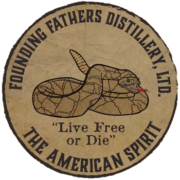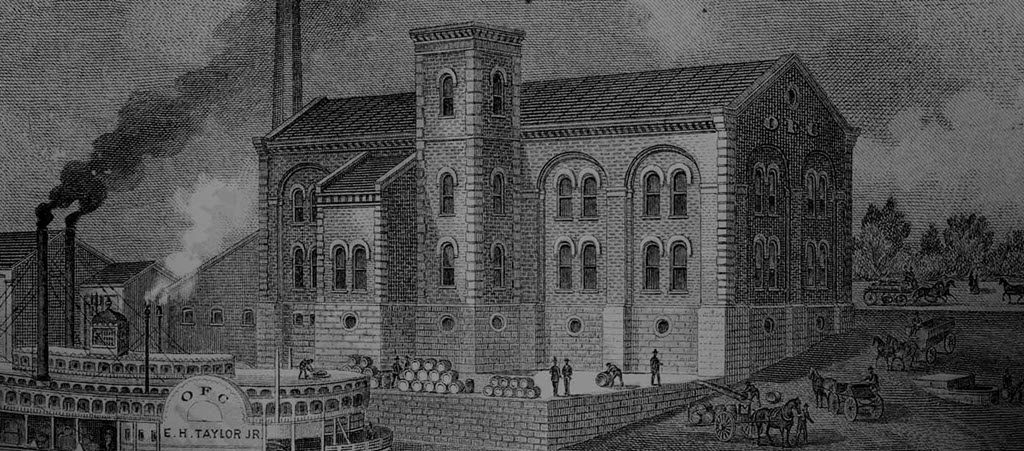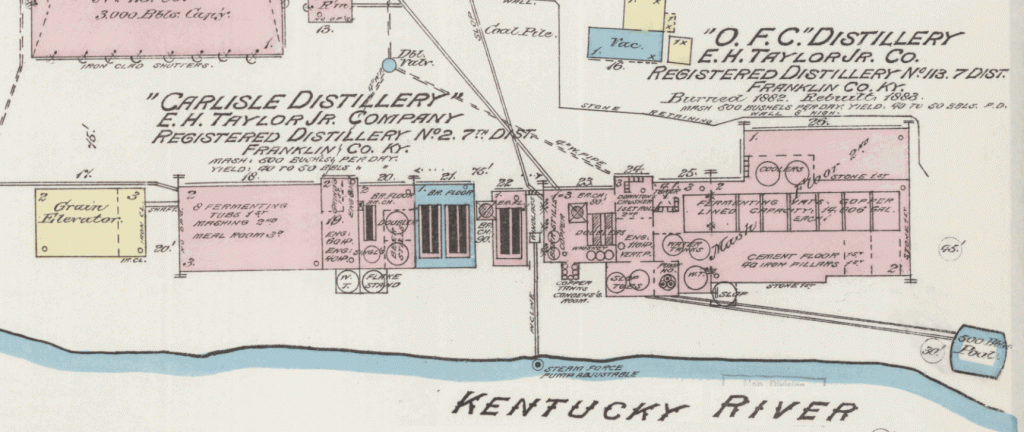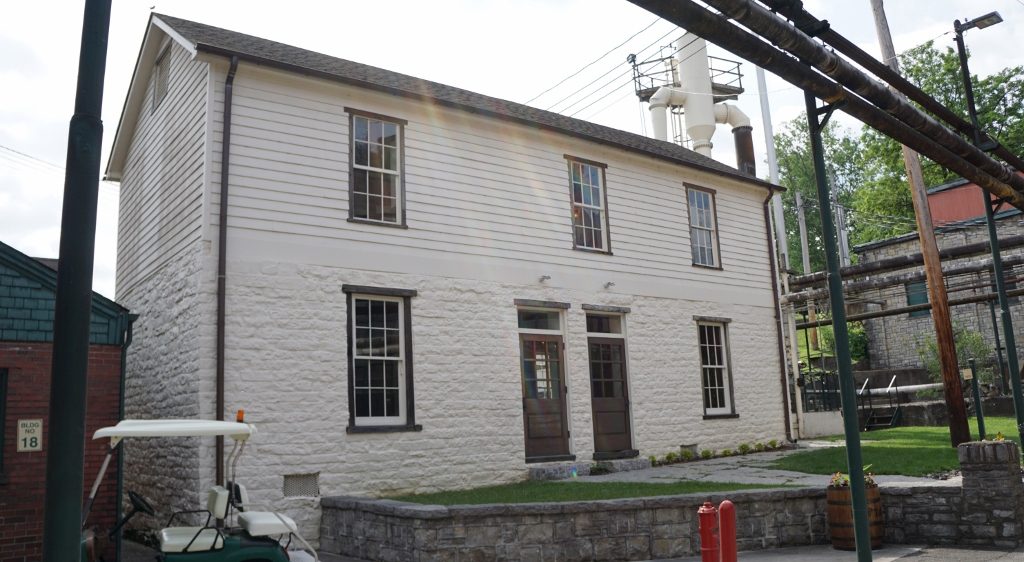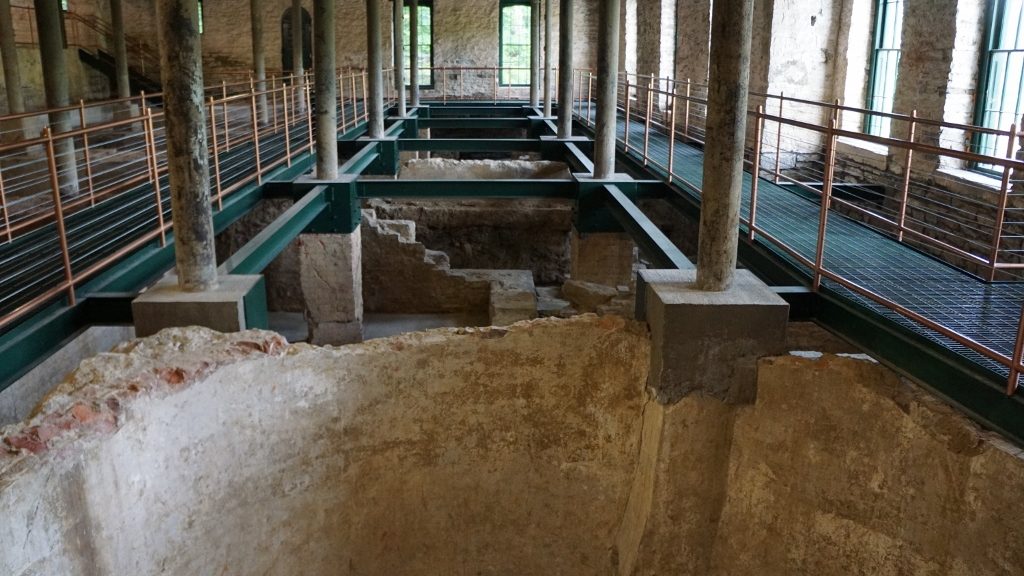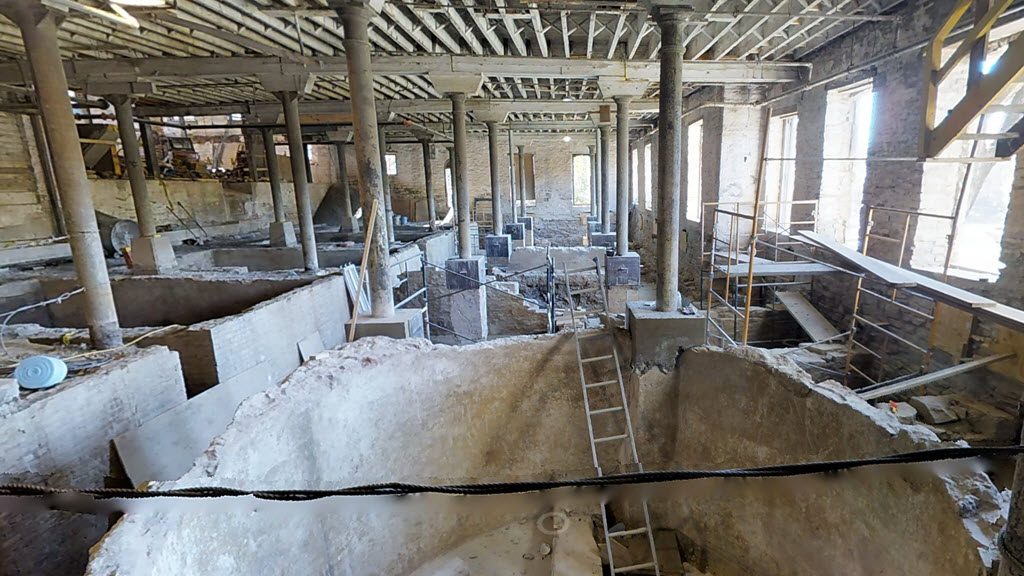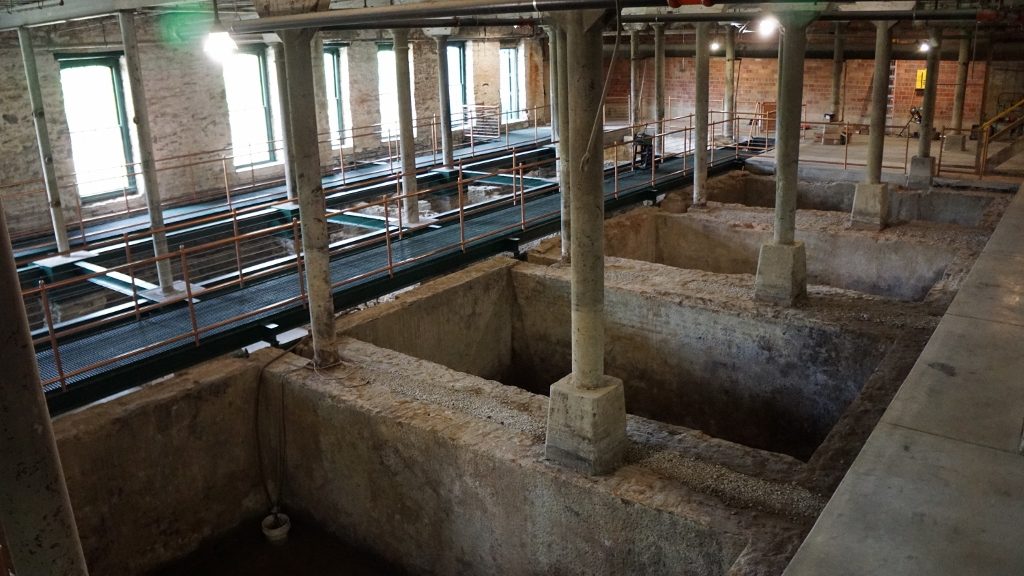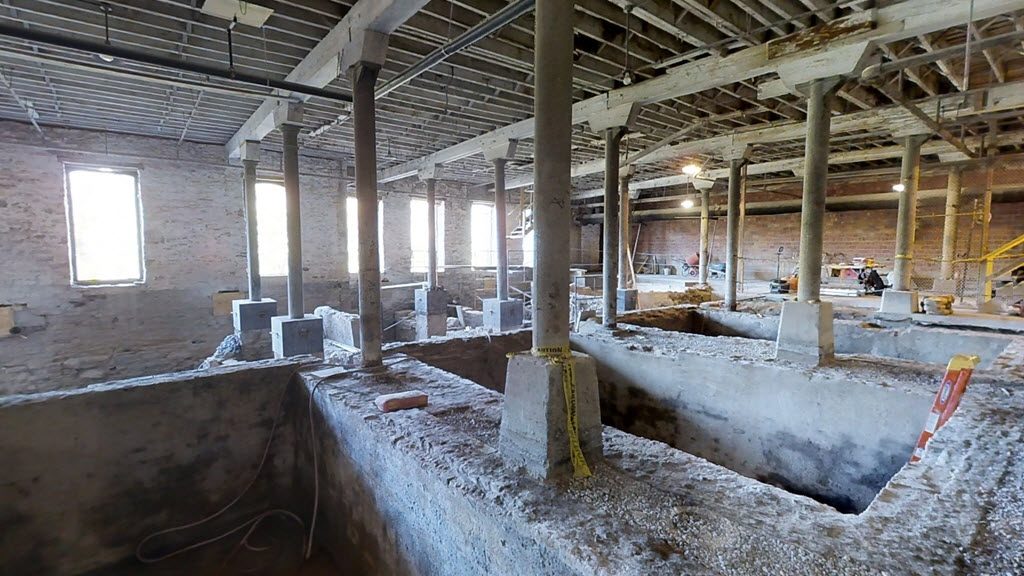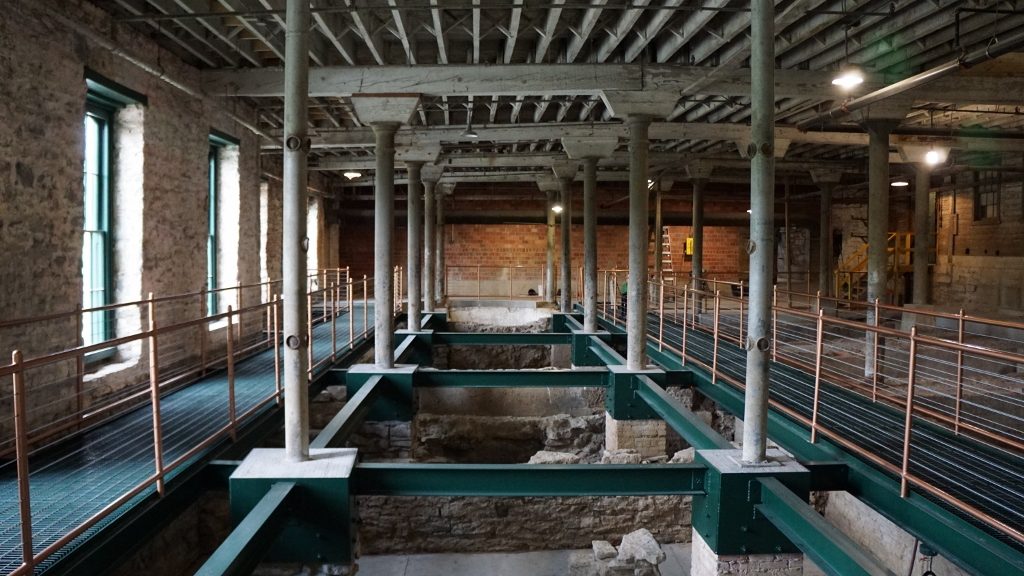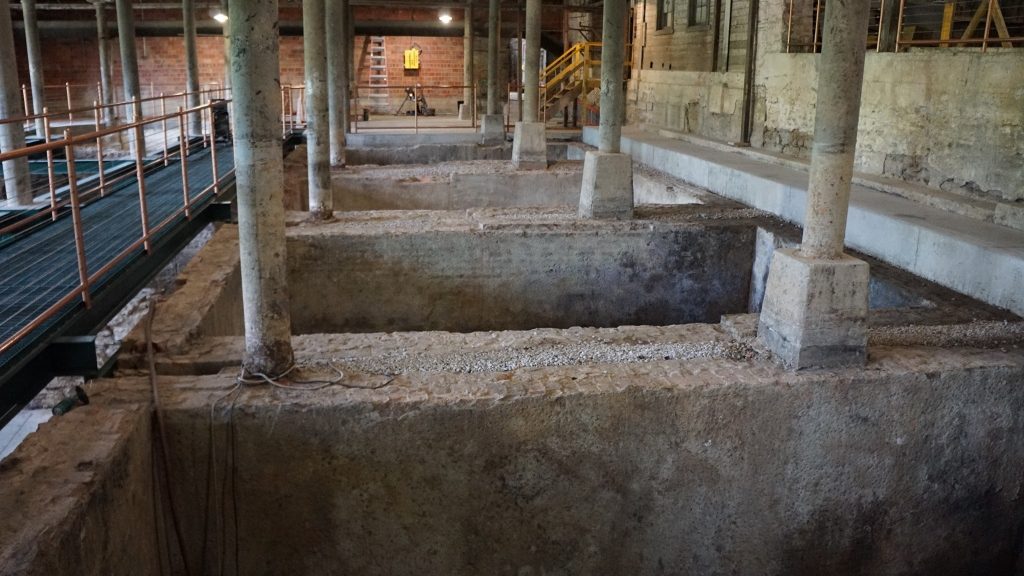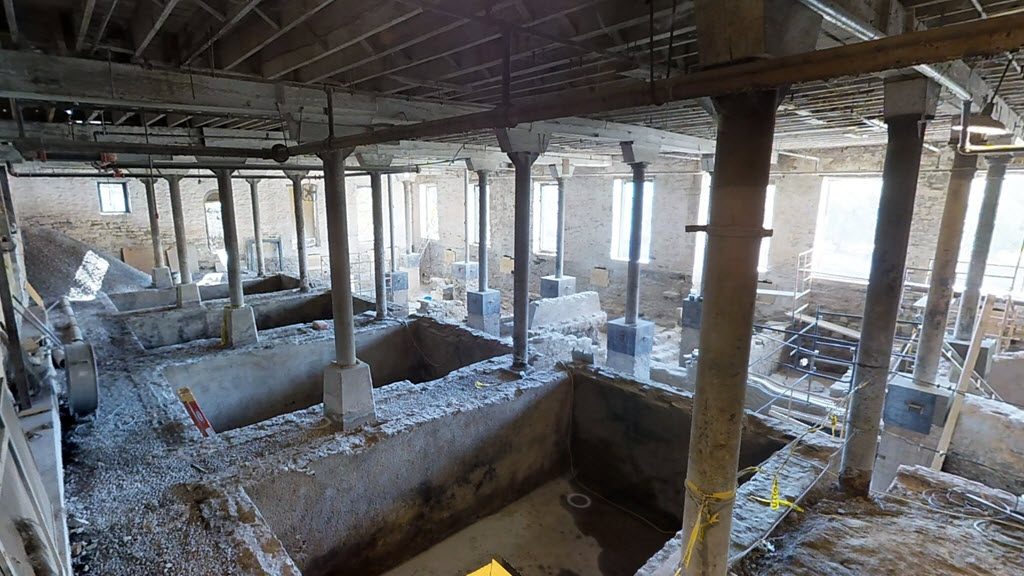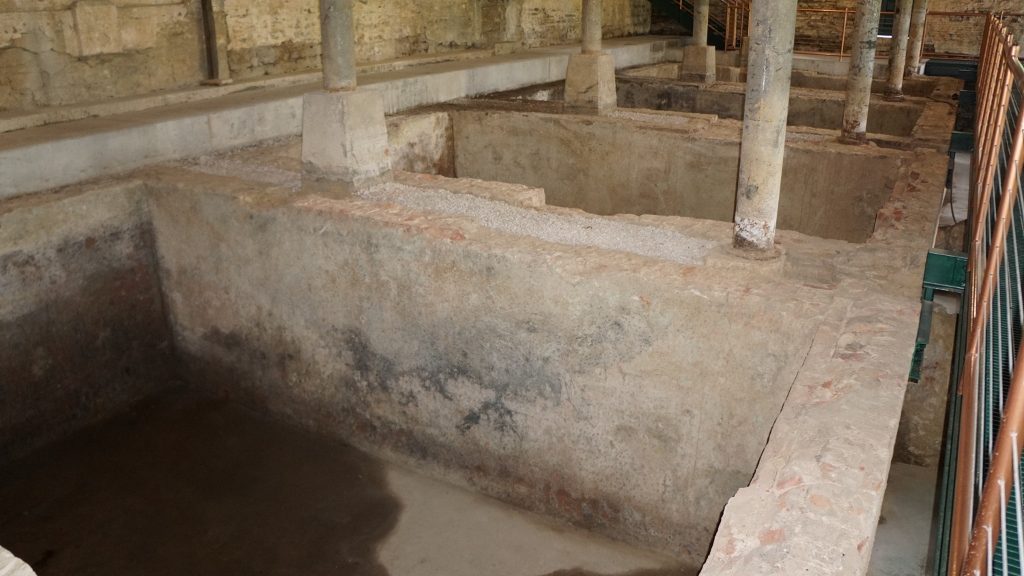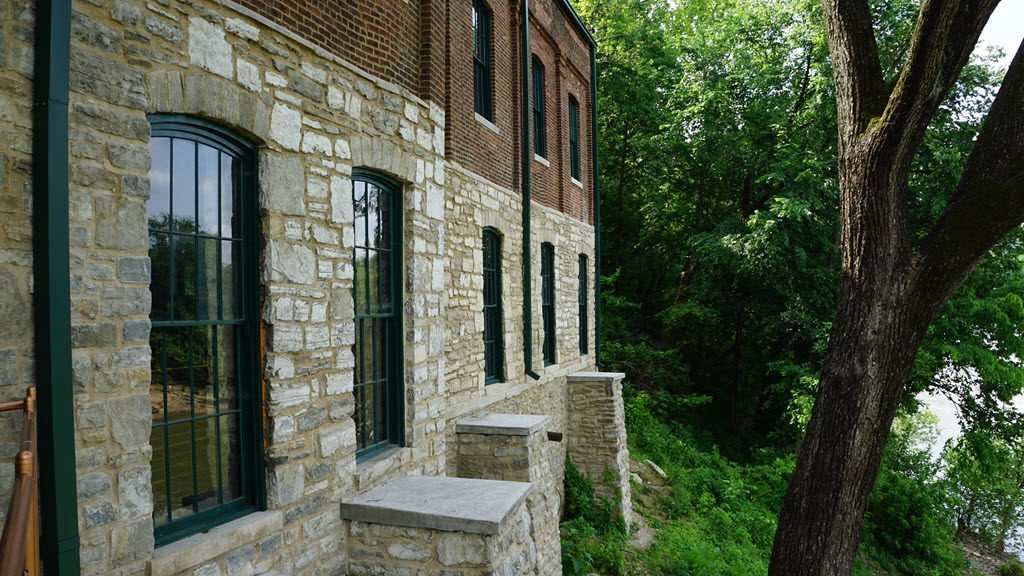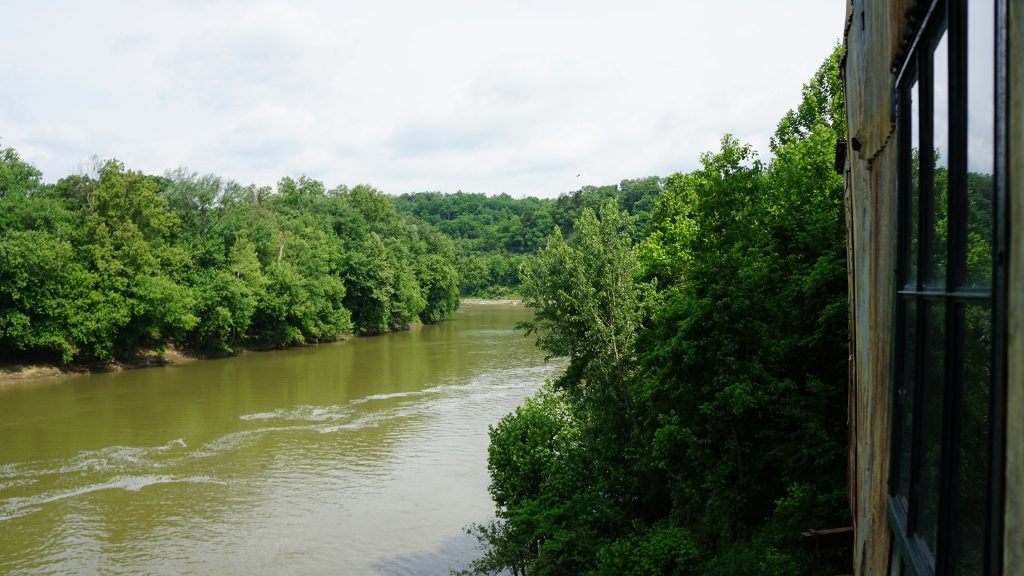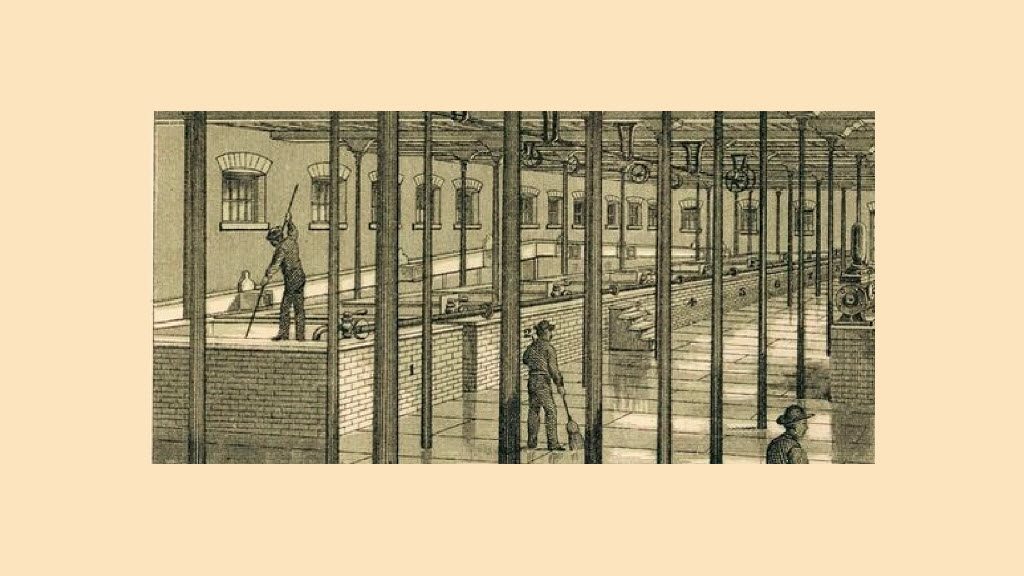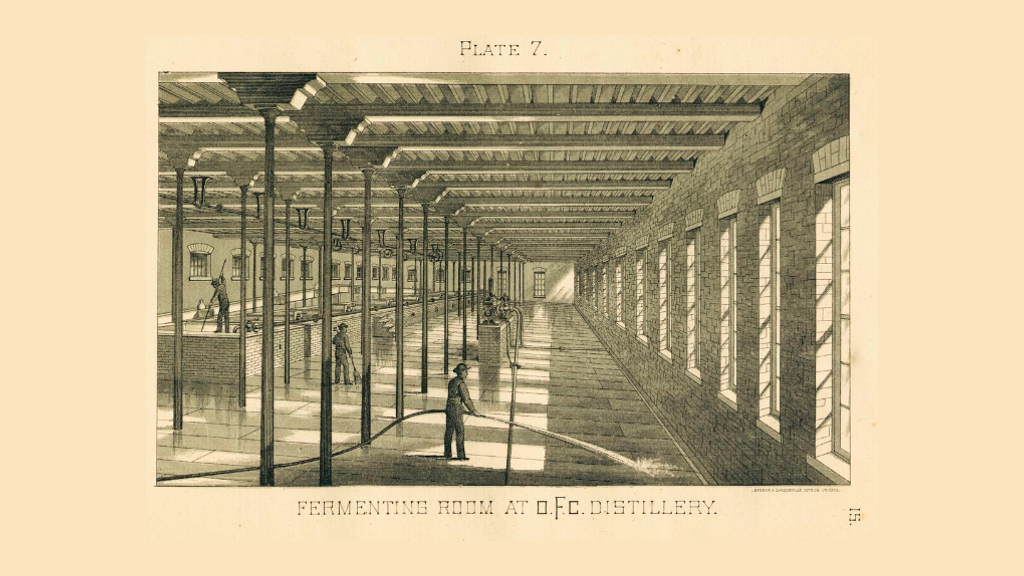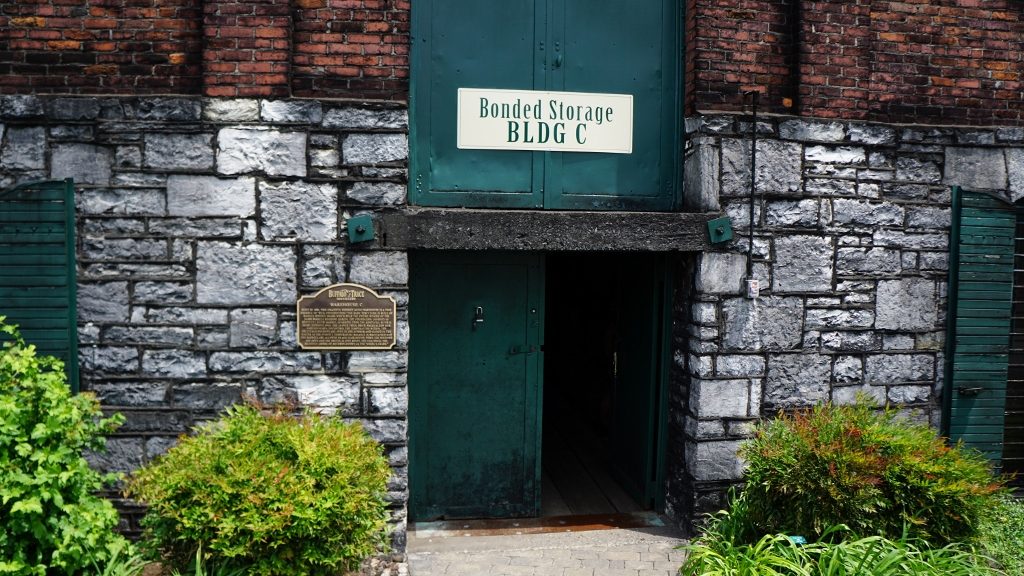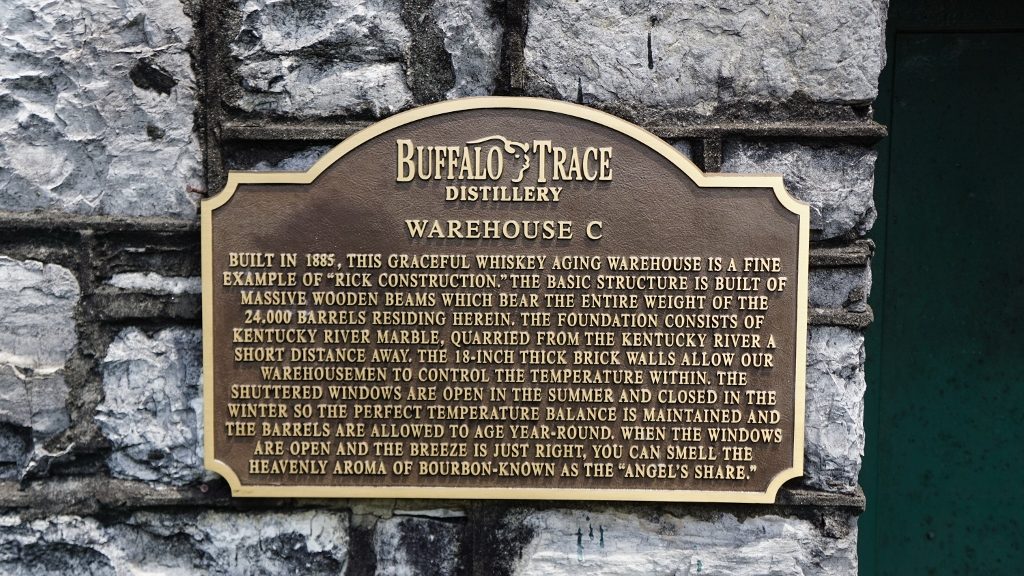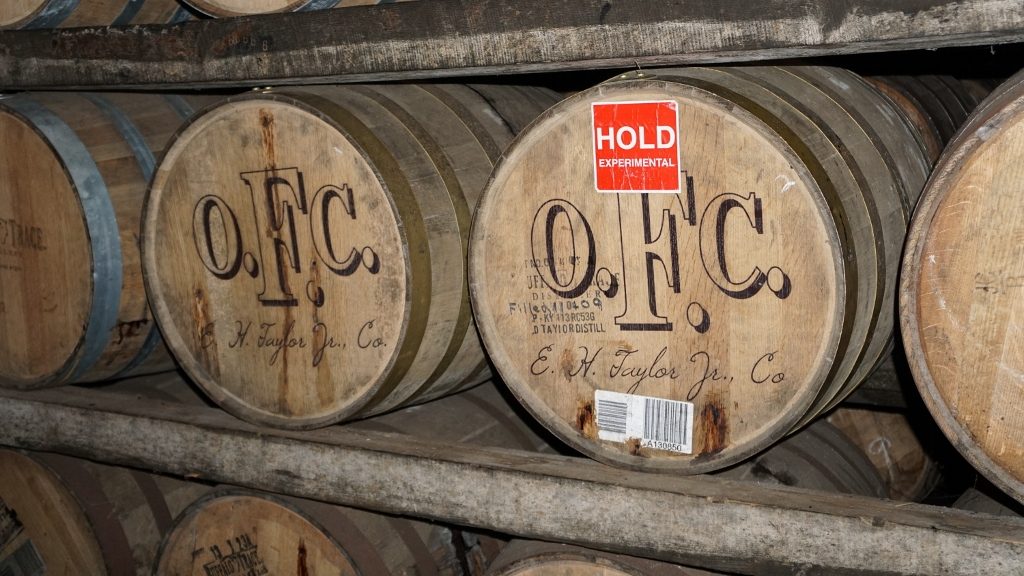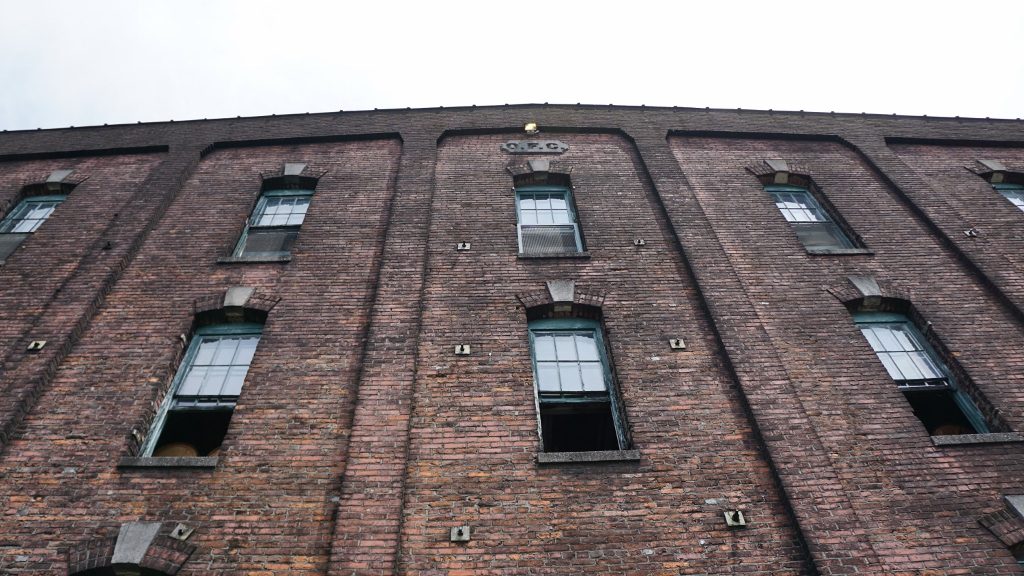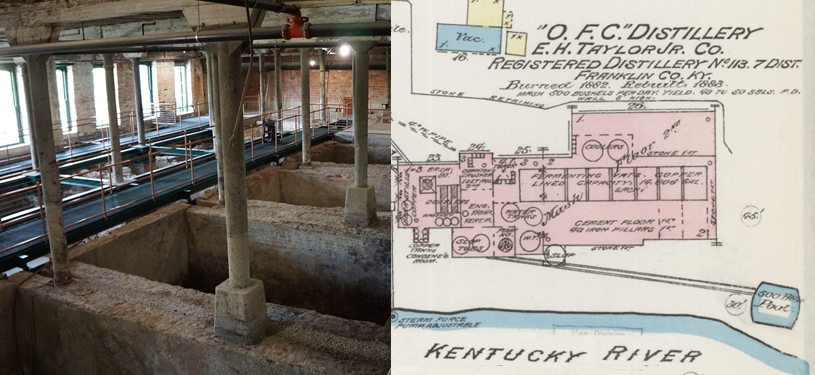
Colonel E.H. Taylor Jr., grand nephew to the nation’s 12th President Zachary Taylor, is often referred to as the “Father of the Modern Bourbon Industry.” He’s known for his many innovations like copper lined fermentation tanks, state-of-the-art grain equipment, the use of column stills, a more efficient sour mash technique, steam heating barrel warehouses in the winter months and embracing the idea of establishing distilleries as a showplace and a destination for tourists.
Taylor was originally a banker and had been involved with financing many distilleries in and around Frankfort, Kentucky. In 1869-70, Taylor established his own distillery in an area of the city called Leestown on the banks of the Kentucky River. He named his distillery the O.F.C. (Old Fire Copper) Distillery in reference to the belief that the finest whiskey was produced in old-fashioned wood-fired copper stills. Looking at some historical maps, there were actually multiple distilleries along this section of the Kentucky River. This is an area best known today as the Buffalo Trace Distillery.
Stay Informed: Sign up here for the Distillery Trail free email newsletter and be the first to get all the latest news, trends, job listings and events in your inbox.
Renovation Leads to Discovery of Bourbon Pompeii
With the ebbs and flows in the bourbon industry this site has seen both good times and bad. It’s also seen its share of fires, demolition, renovation and expansion. In the modern day bourbon boom, times are good at the Buffalo Trace Distillery. The distillery recently welcomed its 1,000,000th visitor. The number of visitors is actually higher but they’ve really only been counting since they officially opened the campus to tours in 1999. With the growth in tourism, they needed more space for visitors.
In 2016 Buffalo Trace began work on the O.F.C. Building to turn it into additional meeting and event space. It was a building that had not been used for distillation for many years; it had been decommissioned in 1958 and basically forgotten. Once they started the renovation they discovered that hidden under the cement floor was the original O.F.C. Distillery foundation and fermentation vats. The found the original foundation wall built by Taylor in 1869, and then a second foundation Taylor built in 1873 when he set out to build the industry’s first “modern” distillery. The fermenting vats inside were found intact and date back to 1883. These are unique finds, and may arguably be called the oldest, most intact distillery in existence in the United States; as intact remains of early buildings and equipment on most distilleries are completely removed during development and expansion.
E.H. Taylor Tour Now Open to Public
After nearly a year of renovation, Buffalo Trace has opened up this area for the first time to visitors. It’s called the E.H. Taylor Tour and includes three stops.


Click any image to enlarge.

At the end of the visit guests will return to Buffalo Trace’s Visitor Center where they can enjoy a complimentary tasting to round out their tour. The new E. H. Taylor Tour will last about an hour and is complimentary. It will run Monday-Friday at 2:30 p.m.
Related Stories
Explore the Ruins of the 1873 O.F.C Distillery with this Immersive 3D Tour This is a must see. Watch in VR if you have a headset.
Buffalo Trace Renovation Turns to Excavation with Discovery of 1873 O.F.C. Distillery
Buffalo Trace Distillery Celebrates 17% Increase in Tourism, Millionth Visitor & Bourbon Pompeii
Buffalo Trace Distillery Granted “Patent Pending” Status for Sour Mash Process
Resource: Enomalies
Please help to support Distillery Trail. Sign up for our Newsletter, like us on Facebook and follow us on Twitter.



